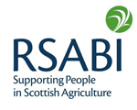In this short feeding guide we aim to give you a few simple steps to ensure the best performance and utilisation is achieved.
• Recommended inclusion rates should be between 70-80% of total dry matter intake
• Access to straw or hay as well as the forage brassica is important
• Ensure a good water supply
• Occasionally, overfeeding can cause goitre and blood anaemia but access to straw and hay can help reduce risks of this problem A lot of the forage will be grazed in situ and we hope the guide below helps you calculate your feeding numbers.

FEEDING SAFETY
INTRODUCE THEM SLOWLY
Introduce stock to brassicas gradually on full stomachs to avoid digestive upsets. Start with two hours a day, gradually increasing over 7-10 days to unrestricted access.
PROVIDE A RUN-BACK AND PROTECTION
A wide access run-back should have been factored in when the crop was drilled. This could be the grass headland or access to an adjoining field. These run-backs are essential for animal welfare and crop utilisation. Also, always provide shelter, such as a hedge or area they can get out of the wind.
STRIP GRAZE
Long, narrow breaks are best to enable all stock to access the crop at the same time and prevent localised poaching. The fence should be moved daily.
Start grazing at the top of the hill and work your way down to reduce run-off and environmental risk. Double fencing is also advisable. A fence at the feed face can be looped round one end of the field in a U and used to make a second fence line behind. When stock are moved, the first fence line can simply be wound up. This eases stock movement.
FEED PLENTY FIBRE
Brassicas are generally low in dry matter at about 12-15 % DM so fibre needs to be provided to provide scratch factor and promote rumen function. Fibre should make up about 20% of intakes. Straw will be adequate for dry cows, whilst better quality silage will be needed for growing animals. Bales should be put out ahead of grazing. Avoid driving tractors on to the field during the winter to limit poaching. Always provide drinking water.
PROVIDE APPROPRIATE MINERALS
Brassicas tend to be high in glucosinolates, which can negatively effect iodine and vitamin E uptake. They are also low in copper, iodine, phosphorous and magnesium so it's important to provide these minerals. Bolusing every animal is advisable to ensure they get the right dose. A mineral bag can also be cut open over the top of a silage or straw bale to provide mineral with every bite.




